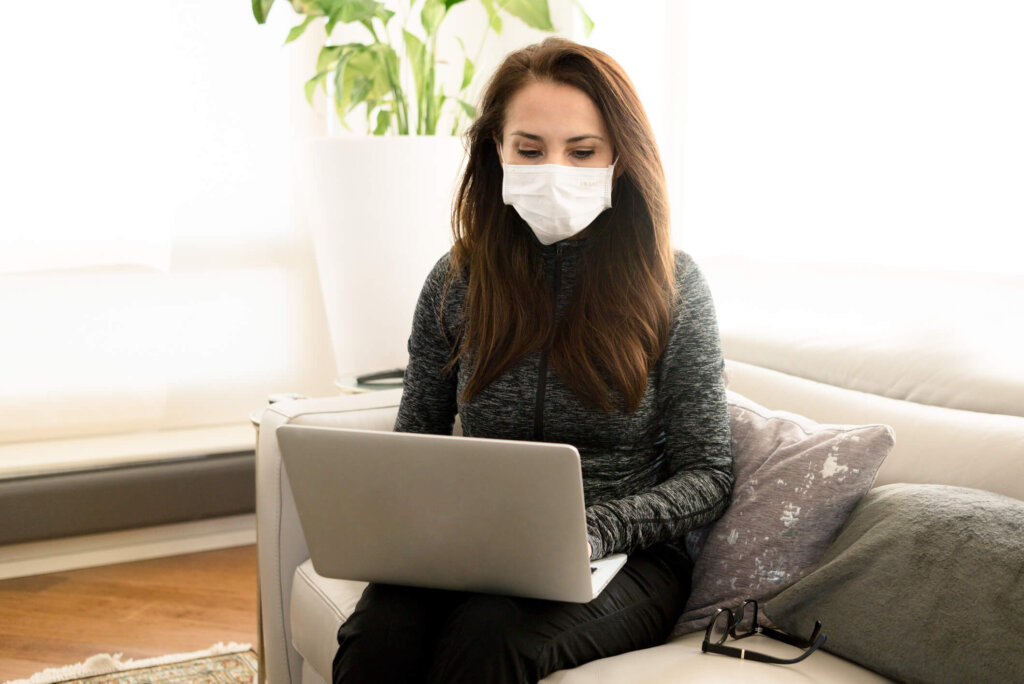As of this writing (April 2020), public health is marshalling its response to the coronavirus disease 2019 (COVID-19) pandemic. The sobering statistics that are available today will be outdated within hours. Suffice it to say that, upon the June 2020 publication of this column, our collective understanding of the pandemic, the response, the efficacy of the response, and the new normal will be better known. At every stage of understanding, however, our primary and enduring wish is that our families, colleagues, neighbors, and friends are safe.
As environmental health protections are considered essential, the expectations of this profession remain high, arm-in-arm with the other essential workers in our communities. In the same moment, other businesses and workers are directed to change the very nature of their work or to suspend operations temporarily.
As new public directives surrounding shelter-in-place, social distancing, masks, disinfection, etc. are established, we will explore new norms around continued operations in environmental health.
In my network, I observe widely varying department policies. Some rely on recommendations for simple social distancing. In other cases, personal protective equipment (PPE) are introduced and required. In the extreme, some health departments are limiting their exposure through phone “check-in inspections” that are needed to guide operators who are also finding their ways. The degree to which health departments modify practices is a function of local and state orders and the orders of their health officers.

Working Remotely
Today, most everyone in the environmental health workforce is working from home either part-time or full-time. This specific challenge—being effective away from the office—is not very different from loan officers, insurance agents, counselors, and teachers in that we’re all defining new ways to work. And while there’s no shortage of online articles about working from a home office, for environmental health professionals working in a crisis, I offer five practices to master:
1. Dress for work: Without exception, remain professional in your communications and routines. Preparing for and dressing for work is a fantastic way to reinforce those ideals. Dressing is more than your clothes, it’s your mindset. Keep to a schedule and a work plan.
2. Claim your workspace: If you’re sharing a workspace with others in your household, work out timing and agree to reasonable accommodations. Since not everybody has a dedicated office, expect some dustups. It’s not unreasonable, however, to prioritize among wage earners, students, and entertainment. You might just have to sit in your car to take an important call if that’s what it takes.
3. Commit to communication: Don’t underestimate how much regular office communication is done by the coffee machine and in the hallways. So, you must not be shy about picking up the phone to send a text or suggesting daily stand-up meetings. A daily stand-up is short meeting (nobody sits, they all stand) designed to rapidly surface the most immediate activities and needs.
4. Build a practice: Become an expert in the technical aspects of web meetings, conference calls, collaborative workspaces, and security and privacy. Take 30 minutes to learn and practice Zoom, WebEx, GoToMeeting, or Skype meetings as one or more of these tools is likely essential.
5. Take care of yourself: Even while sheltered in place, we must take breaks, stand, stretch, walk, and practice good nutrition. In the transition, do not be too hard on yourself as you work to master this new skill. It’s no different from learning a new software program. Pick up the phone and chat with a friend for a few minutes. Catch up.
Technical Components
We do not achieve our successes alone. We rely on our leadership and the contributions of our information systems/information technology departments. Realize that they are also scrambling to support departments across the state, county, city, or district.
Internet Connectivity
The foundational element to remote work is Internet connectivity. Typically provided by your cable company, phone company, or wireless company, you’d be wise to consider increasing bandwidth (typically for an additional fee) and hard wiring your workstation to the router instead of relying on Wi-Fi. A network or Wi-Fi extender can also improve performance throughout the house.
VPN Connectivity
If the software or files you access reside primarily on your health department’s servers, you might be asked to launch a VPN on your workstation or tablet. VPN stands for virtual private network. It’s a networking tool to protect and encrypt communications between your workstation and the health department office. The VPN software will prompt you for credentials and once it is up and running, will intercept, route, and encrypt those communications.
You could also be prompted for two-factor authentication. This authentication means that in addition to your username and password, you might have to confirm a text on your phone and/or enter a code from a special device. This extra step just enhances security since passwords can be shared or guessed.
Note that VPN connections can time-out (shut down after a period of inactivity). So, be sure to check the VPN connection status before you call for assistance.
Cloud-Based Software and Collaboration
For health departments that have committed to cloud-based software, the transition to work-from-home is easier. It’s not much different from how the same worker uses those systems in the office. Microsoft’s Office 365 (recently rebranded Microsoft 365) and Google’s G Suite (the commercial version of Google Docs) are two very popular cloud-based collaborative solutions for e-mail, word processing, spreadsheets, and presentations. Video, Voice, and Chat There are several video and voice conferencing services available as Zoom, WebEx, GoToMeeting, Microsoft Teams, and others vie for our business. The free versions might have time or other limits. The paid services are likely more appropriate for business.
When conducting a video conference, turn on your camera to enhance the personal connection among attendees and to encourage proper attention. Mute your line when not speaking and avoid multitasking.
New to many environmental health professionals is online chat. Nearly identical to text messaging, chat systems such as Microsoft Teams and Slack are great for quick questions as well as group discussions. With software integration, an active chat can be promoted to a video meeting.
Don’t overlook the mobile versions for your iPhone or Android phones. Managing and Motivating a Remote Workforce Clear and frequent communication, including regular individual feedback and more relaxed opportunities, is key. You must trust and care about your team and now is the time to show it. Use a regular stand-up meeting to share an Internet meme of the day or funny joke.
Encourage the team to problem solve and to share and celebrate their successes. The bottom line is that managing a remote workforce can be tough.
A Final Word on Security
One final word and it relates to security. When you remove your laptop from the office or use your personal computer equipment, years of security policy can be undermined. Don’t be the one who clicks on an errant attachment or leaves an unencrypted hard drive unattended.
As we all navigate what being remote means for us in our individual roles, I hope you take some comfort in knowing that your work and the collective work of the environmental health community are critical and relevant. Together we will take our learnings from this time and show up even stronger and more impactful than before. Stay safe.
Disclaimer: The mention of specific companies, products, and services in this column is not an endorsement of those companies, products, and services by either the National Environmental Health Association or Accela.






